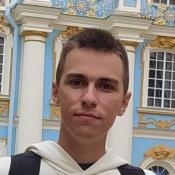Quantum seminar | 09 October 2024
2530

We study the absorption of a vortex photon with a quantized angular momentum by a relativistic electron with a Lorentz factor $\gamma \sim 1-10$ in a strong magnetic field with a magnitude up to the Schwinger value, $H_c = 4.4\cdot 10^{13}$ G. We investigate absorption cross sections and analyze their dependence on the parameters of the incident photon and initial Landau electron. It is found that total absorption cross sections decrease for larger angular momentum of the incident photon and increase for larger angular momentum of initial electron. The characteristics of the process are compared for different values of the external magnetic field. The contributions of different electron spin transitions to the total absorption cross section were also investigated. We find that the processes without an electron spin flip dominate and on top of that cross sections for the processes with "spin down" $\rightarrow$ "spin up" transition are larger. This effect can be an analogy of the Sokolov-Ternov effect for photon emission. Our results can pave the way for better understanding the QED-processes in strong magnetic field typical for astrophysical environments such as magnetospheres of neutron stars.
